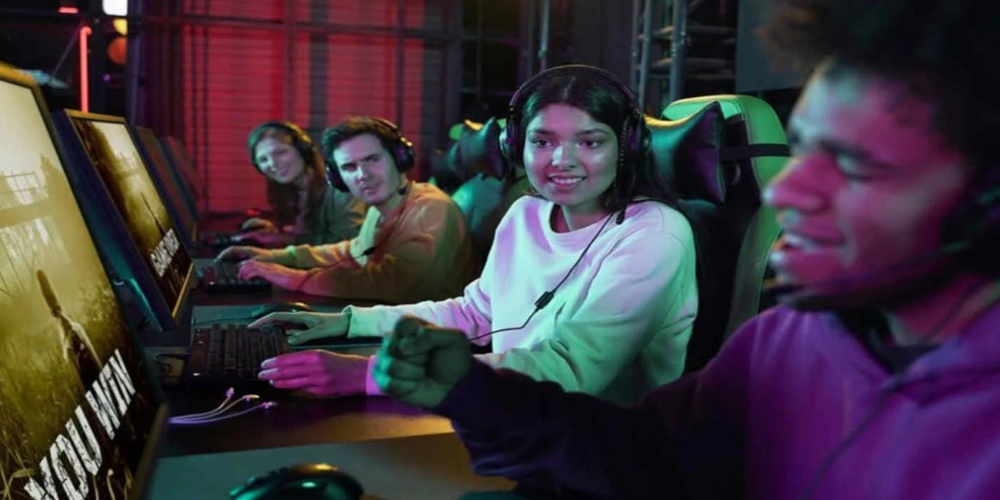
The Birth of Multiplayer Gaming
Multiplayer gaming has undergone a significant transformation since its beginnings, developing in numerous directions that have deeply altered the terrain of interactive amusement. The earliest forms of multiplayer games date back to the 1970s and 1980s, marked by the invention of seminal arcade games like Pong and Space Invaders. These pioneering games allowed players to challenge each other in a shared physical space, often found in bustling arcades or enjoyed at home alongside friends and family. The sight and sounds of fierce yet friendly competition became a beloved social activity, creating a foundation for future gaming experiences.
However, the concept of multiplayer gaming gained momentum and entered a transformative phase with the rise of Local Area Network (LAN) parties in the 1990s. LAN parties saw groups of gaming enthusiasts bringing their computers together in a single location to engage in networked multiplayer games. During this era, the emergence of intensely engaging and competitive video games such as Quake and StarCraft marked a significant shift, delivering a deeper level of immersion and cultivating a spirit of fellowship and alliance among gamers. The logistical effort required to organize these gatherings underscored the dedication and passion of these early gaming communities.
This era laid crucial groundwork for online multiplayer gaming, where increasingly sophisticated technology and the internet have removed physical boundaries, enabling players to instantly connect and compete with others from around the globe. The exponential growth of the gaming industry, coupled with advances in networking and graphical capabilities, has given rise to ever more complex and richly detailed virtual worlds. As a result, multiplayer gaming has burgeoned into a diverse and expansive ecosystem, encompassing a wide range of genres and fostering vibrant online communities.
LAN Parties: The Social Fabric of Early Multiplayer Gaming
LAN parties were a revolutionary step in the evolution of multiplayer gaming. These gatherings involved gamers bringing their personal computers to a single location and connecting them via a local network. Quake and StarCraft were among the popular titles that thrived in these settings. LAN parties fostered a sense of camaraderie and competition, as gamers would get together to play, compete, and share strategies. While these occasions were typically confined to in-person assemblies, they established the groundwork for the forthcoming developments.
The Advent of Online Gaming
The late 1990s and early 2000s saw the Internet become more accessible to the general public, and with it came the era of online gaming. Titles like Ultima Online and EverQuest offered players the allure of persistent online worlds where they could interact with others from around the globe. This was the dawn of Massively Multiplayer Online (MMO) games, which took the experiences of LAN parties and expanded them to a global scale. The ability to play at any time, with anyone, from anywhere, brought a new level of excitement and inclusivity to multiplayer gaming.
The Rise of Gaming Consoles
While PC gaming was pioneering the online multiplayer scene, console gaming wasn't far behind. With the release of Xbox Live in 2002, Microsoft revolutionized the way console gamers could play together. Services like PlayStation Network and, later, Nintendo Online, followed suit, providing robust online multiplayer experiences for console gamers. These platforms also introduced features like voice chat and digital marketplaces, further enriching the multiplayer gaming experience.
Esports: Competitive Multiplayer Gaming Takes Center Stage
As online gaming flourished, so did the competitive aspect of it. Games like Counter-Strike, Dota 2, and League of Legends brought a new level of professionalism to multiplayer gaming. The rise of esports turned multiplayer gaming into a spectator sport, complete with organized tournaments, sponsorships, and professional players. This added a new dimension to multiplayer gaming, as it became not only a pastime but also a potential career for the most skilled players.
Streaming and the Formation of Online Communities
The 2010s saw the rise of streaming platforms like Twitch, which allowed gamers to share their gameplay live with audiences worldwide. This led to the formation of online communities centered around specific games, streamers, and gaming cultures. Viewers could interact with streamers and each other in real-time, creating a sense of community and belonging. The social aspect of gaming was no longer confined to the game itself but extended to these community-driven platforms.
Virtual Reality and the Future of Multiplayer Gaming
Virtual Reality (VR) is the latest frontier in the evolution of multiplayer gaming. VR offers immersive experiences that are unparalleled by traditional gaming methods. Games like VRChat and Rec Room allow players to interact in 3D environments, making the social aspect of gaming even more engaging. As technology continues to advance, the possibilities for multiplayer gaming are virtually limitless.
Summary
The realm of multiplayer gaming has undergone a remarkable transformation through the years, symbolizing a journey that has redefined the way players interact, collaborate, and compete with one another. During the nascent stages, players would revel in the thrill of gaming together at LAN parties, huddled around bulky monitors, sharing snacks and strategies in intimate settings that fostered strong camaraderie. These local networks laid the foundation for what was to become a colossal shift in gaming.
In the grand tapestry of its history, multiplayer gaming has not only become a technological feat but also a culturally significant medium that continues to enrich relationships and networks worldwide. As developers push the envelope of what is possible and players clamor for more innovative and engaging ways to play together, the future of multiplayer gaming shines brightly on the horizon—promising uncharted territories of connection, engagement, and communal joy.